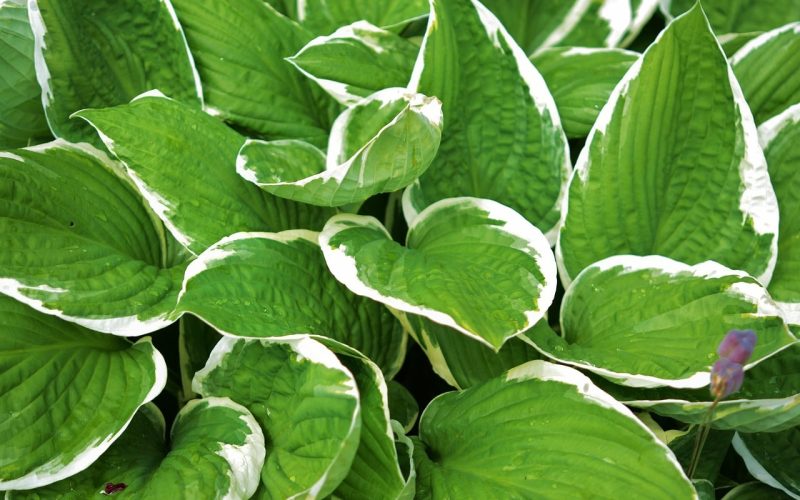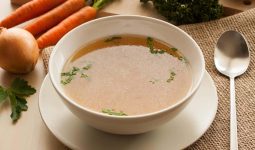Hostas may be a popular choice for adding beauty to your garden, but did you know that they are also edible? Yes, you read that correctly.
All types of hostas can be safely consumed, offering an intriguing addition to your list of edible plants.
In early spring, keep an eye out for the young shoots of your hosta plants, as this is the ideal time for harvesting them.
Many people find that hostas, such as the Hosta plantaginea, have a pleasant taste that can be compared to green beans when cooked.
Furthermore, the young shoots can be quite versatile, finding their way into salads or stir-fried dishes for a unique and delightful treat.
So, the next time you admire your hosta plants, remember that they are not just for decoration but can also provide a nutritious and tasty addition to your meals.
Embrace this surprising edible plant and see what interesting culinary creations you can come up with using your very own garden’s hostas.
Are Hostas Edible?
Yes, hostas are indeed edible, and they can be a delightful addition to your meals.
The entire hosta plant is edible, including the leaves, shoots, and flowers.
They are not just an ornamental addition to your garden but can also find a place in your vegetable garden.
In Japan, hostas are known as Urui and are part of a class of vegetables known as “sansai” or “mountain vegetables,” which describe wild edibles that are commonly harvested and eaten.
The taste of hostas can be quite pleasing, with the shoots often compared to asparagus and the leaves having a lettuce-like flavor.
When selecting hostas for cooking, it is best to choose young shoots that have a tighter curl, as they tend to be more tender in dishes.
The shoots can be cut up and used in salads, stir-fries, or even soups, while the leaves can be boiled and served as a side dish akin to spinach.
When it comes to Japanese cuisine, hostas play a role as a versatile ingredient.
You can enjoy them in a variety of ways, such as sautéing the shoots with sesame oil, boiling the leaves and serving them with a dash of soy sauce, or even turning the tender shoots into delicious tempura.
However, it is essential to be mindful when harvesting and consuming hostas.
Make sure you are gathering the plants from an area that hasn’t been exposed to pesticides, as this can make them unsafe to eat.
Also, while all types of hosta are edible and considered safe, it is recommended to avoid eating mature leaves, as they can be tougher and less palatable.
Hostas are not only flavorful, but they also offer valuable nutrition to your diet.
They are rich in vitamins and minerals, such as iron, calcium, phosphorus, magnesium, manganese, zinc, and copper.
This means that incorporating hostas into your meals can provide you with essential nutrients, similar to other leafy greens like broccoli or spinach.
In conclusion, integrating hostas into your cooking repertoire can bring variety and nutrition to your diet.
Next time you’re looking to shake things up in the kitchen, consider adding these unique and versatile plants to your menu.
Can You Eat Hostas?
Yes, you can eat hostas! These popular ornamental plants are not only a beautiful addition to your garden but also a delicious and nutritious food source.
In Japanese cuisine, hostas are known as Urui, and they’re included in a class of vegetables called Sansai, which are wild edibles commonly harvested and eaten.
Incorporating hostas into your diet can introduce a unique flavor and various cooking methods to enjoy this edible plant.
When it comes to eating hostas, you can consume different parts of the plant.
Young shoots are the most tender and flavorful, while mature leaves and flower buds are also edible.
Harvesting hosta shoots is best done in early spring when they are just emerging from the ground.
These tender shoots have a taste similar to lettuce and can be used in salads or cooked.
There are numerous ways to prepare hostas, depending on your personal taste and culinary preferences.
You can boil, fry, or sauté the young shoots, and the leaves make excellent sandwich wraps as a substitute for lettuce.
Hostas can be incorporated into various dishes like stir-fries and soups or used to make tempura hosta shoots.
In Korea and China, hostas are pickled and served as a side dish, similar to kimchi.
Hostas are not only delicious but also nutritious. They are packed with essential vitamins and minerals, including calcium, iron, phosphorus, magnesium, manganese, zinc, and copper.
These nutrients contribute to overall health and wellness, making hostas a nutritious addition to your meals.
However, there are a few precautions you should take when consuming hostas.
First and foremost, ensure that the plants have not been treated with pesticides, as these can be harmful if ingested.
Also, while hostas are not poisonous or toxic, excessive consumption may result in diarrhea or vomiting due to their high fiber content.
Keep this in mind when incorporating hostas into your diet, and enjoy them in moderation.
Additionally, it is essential to know that hostas can be poisonous to pets, particularly dogs.
If you have pets in your household, be cautious about where you plant your hostas and ensure they don’t have access to the plants to prevent ingestion and possible health issues.
In conclusion, hostas are versatile and delicious edible plants that can be incorporated into various dishes and bring unique flavors to your table.
With proper care and consideration, you can enjoy growing hostas in your landscape and cooking with them in the kitchen.
Frequently Asked Questions
Yes, you can eat hostas. They are edible and have been consumed in some Asian countries, such as Japan and China, for centuries. In fact, hostas belong to the Asparagaceae family, which also includes yucca, agave, and asparagus.
Some popular edible hosta varieties include Hosta Elegans and Hosta fortunei, which can be harvested and enjoyed in early spring during the growing season. Keep in mind that younger hosta shoots and leaves are best to eat as they are tender and have a better flavor than older, mature leaves.
Hostas can be toxic to dogs if they ingest it, as they contain saponins – compounds that are known to cause vomiting, diarrhea, and other health issues in pets. If you suspect your dog has consumed hostas, it’s essential to contact your veterinarian promptly for advice and treatment.
While specific nutritional data for hostas may be limited, they are known to contain vitamins A and C, as well as minerals such as calcium and phosphorus6. Moreover, hostas are low in calories, making them an interesting addition to a healthy diet.
Yes, hostas can be eaten raw, especially the younger leaves and shoot. They have a mild flavor, and when eaten raw, their texture can be compared to that of lettuce. However, you can also cook hostas if you prefer. They can be sautéed, stir-fried, or even grilled to add a unique taste to your meal.








